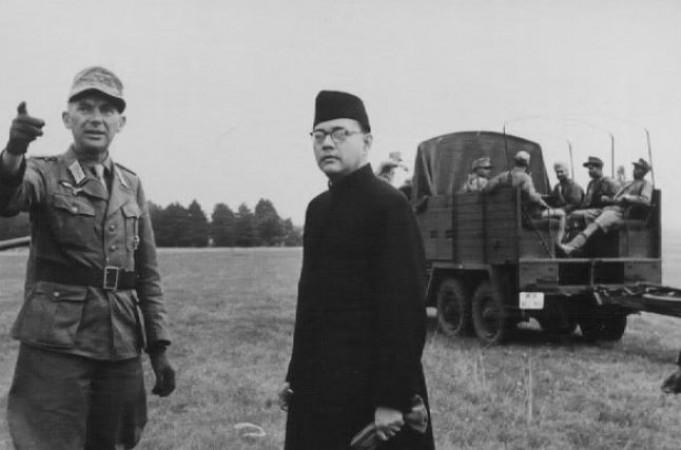
In the annals of India's struggle for independence, one name stands out as a beacon of audacity and unwavering commitment—Netaji Subhash Chandra Bose. On October 21, 1943, Bose dared to defy conventional norms by establishing the Azad Hind government, a move that garnered recognition from nine nations, including Germany, Japan, and the Philippines. However, a cloud of intrigue lingers: Why did India's leaders of the time withhold recognition from this bold endeavor? Moreover, does the freedom that Bose sought through the Azad Hind government differ from the one ultimately achieved through the Transfer of Power in 1947? Let's embark on a journey of exploration to decipher these intricate layers of history.
The Formation of Azad Hind Government: A Defiance of Norms
Subhash Chandra Bose's audacious move to establish the Azad Hind government marked a radical departure from the conventional approach to attaining independence. With the patronage of Axis powers Germany and Japan, the Azad Hind government sought to rally Indian forces against the British Raj. Its recognition by nine nations, embassies opened in multiple countries, and the stirring slogan "Jai Hind" ignited a sense of hope and defiance among Indians.
Recognition Denied: Intricacies of Leadership and Strategy
The paradox lies in the fact that while several nations embraced the Azad Hind government, the leaders of India's mainstream freedom movement refrained from giving it formal recognition. This can be attributed to a complex interplay of factors. First, India's pre-eminent leaders believed that seeking the assistance of Axis powers might compromise the moral integrity of the independence struggle. Second, they questioned the feasibility of achieving long-term autonomy through military cooperation with Axis forces. Lastly, given the Axis powers' own imperialistic ambitions, aligning too closely with them might have raised concerns about the post-independence landscape.
Two Visions of Freedom: Comparing Azad Hind Government and Transfer of Power
While the Azad Hind government and the Transfer of Power both sought independence, their methods and implications differed significantly. Bose's vision was characterized by an urgency to expedite the liberation from British rule, even if it meant collaborating with unlikely allies. On the other hand, the Transfer of Power in 1947 was a result of negotiations between India's prominent leaders and the British authorities, culminating in a peaceful transition.
The Legacy of Azad Hind and Post-Independence India
The legacy of the Azad Hind government continues to evoke debates about its role in India's struggle for freedom. While Bose's audacity and conviction are admirable, the pragmatic concerns of India's mainstream leaders underscore the nuanced nature of the time. The Transfer of Power in 1947 marked a watershed moment, resulting in a democratic, self-governing India.
In essence, while Subhash Chandra Bose's Azad Hind government commanded international recognition, it stood on a different trajectory from the path eventually chosen by India's prominent leaders. The pragmatic considerations of those leaders were guided by a broader perspective of sustaining the nation's integrity and fostering a united, peaceful transition. The Azad Hind government, while embodying courage and valor, represents a distinct strand in the rich tapestry of India's march towards freedom.
Unraveling the Enigma: Pakistan's Independence Day Debate
Remembering the Sacrifice: Khudiram Bose, Inspirational Young Freedom Fighter
Timor-Leste: Unveiling the Beauty of a Young Nation Amidst Rich Heritage